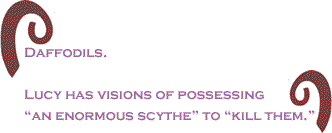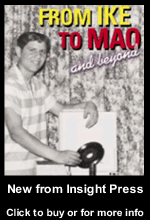
|
|||||||||||||||||||||
|
The current issue is always free to all readers If
you need the access available to a |
|
 |
|
Make no mistake. The subject of this article is political. It is about an institution and its “industrial complex” - books of prose and poetry, history and discourse. In this institution, chains are invisible and screams, sometimes, are muffled - sometimes. The visibility of one dominant race and a pecking order cannot to be ignored. There are new rules! As Michael Dyson writes in Baptizing Theory, Representing Truth, some of us, in this institution, now must show gratitude for being allowed behind the doors, its doors. We are being admonished, Dyson writes, for acting ugly in the past - that is, militant in the past. Now, we cannot “cause ruckus or make aggressive arguments about, or respond angrily to, the presence of social or racial injustice.” This institution is academe, higher education - college. Let me present a component of our struggle for justice and equality that challenges “education,” that contentious institution of power for the control of knowledge. Come with me to a classroom in this institution where I have decided on reading material, and I am introducing the first book. A book! It is Jamaica Kincaid’s Lucy. Mariah, the protagonist’s white employer, asks Lucy if she had ever seen daffodils. Daffodils made Mariah feel “so glad to be alive.” Lucy, maid and child care worker for the couple, Mariah and Lewis, is puzzled, and she wonders to herself, “How does a person get to be that way?” Lucy knows of daffodils, so she begins to tell Mariah a story. At ten years old, as “a pupil at Queen Victoria Girls’ School” in Antigua, she had to memorize a British poem. It featured daffodils. To “an auditorium full of parents, teachers,” and fellow classmates, she recited the poem with “modesty and appreciation.” But, as she tells Mariah, “inside,” she “was making a vow to erase from my mind, line by line, every word of that poem.” Lucy recalls a dream she had later that night.
Lucy and Mariah are standing together, and but, when Lucy stops speaking, both women step back from each other. Mariah regains her composure and, reaching out to embrace Lucy, she says, “’What a history you have.’” My, what a history you have! Does Mariah have any role or responsibility for “Lucy’s history”? Well, let’s go on. Lucy’s history and Mariah’s denial of historical reality,and her indifference, place Lucy in a different space where a different perspective on the world and everything within it or anything purporting to represent that world, is offered to Lucy as a gift. For it is a gift of sight/insight.
I have taken hold of my history and heritage to focus on resistance literature. This includes most all of Black, Latino/a, Chicano, Native American, Asian, Muslim, and Arab literature, with a pedagogy that confronts the issues of race, gender, and class. Imagine my reception at pre-dominantly white institutions. Placement in most university English departments is contingent on the department’s need for a “minority” or “minority” literature, thus, forming an atmosphere in the classrooms and halls of academe where I am no more than a show of “diversity” and my subject, most importantly, and my perspective, is suspect - if not a threat to the institution. Thinking students might question authority and start talking back - and worse, take action individually or collectively. Taking their cue then from the nonchalant attitude of the English department, my students often do not take seriously the subject of my course. I am a “second-rate” professor with a less than worthy subject to learn. But I press on. To the classroom again… Informed by the media about “Black rage,” they declare Lucy “bitter” and “hateful.” Kincaid declares, “I met the world through England, and if the world wanted to meet me it would have to do so through England.” It is not bitterness or hatred. It’s about conquest, privilege of all things Western and white. It’s about injustice and unfairness. Once at the house on the lake, Mariah hurries to take Lucy to a “garden,” her “favorite spot” in the entire world. Mariah covers Lucy’s eyes and walks her a few feet to a “clearing.” There, she uncovers Lucy’s eyes and exclaims, “Now, look at this.” Lucy looks.
Daffodils. Lucy has visions of possessing “an enormous scythe” to “kill them.” In contrast, Mariah, with “joy” in her voice, announces, “these are daffodils.” Wow!
Educated in the Western world, Mariah’s class privilege and white skin entitle her to assume possession and authority over all beings - human and non-human. So they are “her” daffodils, and she must show “her” daffodils to the “underprivileged,” the "underrepresented” - the other - who does not own anything! Mariah’s space is within the discourse of innocence where she sees “beautiful flowers.” Lucy sees “sorrow” and thinks not just about the oppressed people and their discourses but considers the blindness of the oppressed as well: “I felt sorry,” Lucy thinks, “I had cast her beloved daffodils in a scene of conquered and conquests; a scene of brutes masquerading as angels and angels portrayed as brutes.” Do you see where we are now, reader? We are just reading a book! The time has come for Lucy to speak. She remembers a story she first heard from her mother about Jesus feeding thousands with a few fish. At the end of the story, Lucy asks her mother, “’how did Jesus serve the fish? Boiled or fired’”? So charmed was her mother by the question that she, in turn, “told everyone she met… and they would shake their heads and say, ‘What a child!’” Lucy tells Mariah that the question was not “unusual,” for in her town “many people earned their living by being fishermen.” The fishermen sort through the fish for sale but save enough for wives to “fry them at the seashore.” Children like Lucy learn to recognize and articulate a set of cultural values and beliefs. In short, they acquire a positive image of themselves within a community of family and others. Then it is not difficult for her and other children to ask questions, to imagine between the lines of what they see. So Lucy imagine Jesus feeding people who would have passed “judgment on the way the food tasted.” “’It would have mattered to me,’” she tells Mariah. “It was a pity that the people who recorded their life with Christ never mentioned this small detail, a detail that would have meant a lot to me." But you know what will come next… Mariah closed her eyes and then “opened them wide and then wider,” the narrative tells us. A silence fell between us; it was a deep silence” Lucy writes. Later, in the kitchen Lucy hears the “clink of cooking utensils” as Mariah, writes Lucy, prepared the fish they had caught earlier the way Lucy “did not like it.” With Lucy’s progressive insurgency, Mariah takes on an unfamiliar role, one of silent “victim.” Joined with overseer Blacks, whinnying whites cry out for color-blind policies and a return to white affirmative action, in essence.
Looking out at my students, I watch their raised hands waving impatiently, their heads tilted to one side, and their eyes glaring into my eyes. What a history of preferential blindness. But we are to be admonished, Dyson says. Yes, but are we to give up? Are we to leave the readings of books like Lucy, that speak to our cultural heritage, to those who would “steal our ancestors” and whitewash the minds of our young children and college students? The Mariah’s and the Lewis’ with “good” intentions want to forget the past, if they even know it, because to remember would jeopardize their own interests in the racial and economic hegemony that is to be preserved by every soldier in the field. These institutions of higher education and their faculty are soldiers at the front line. They are the ones who decide what kind of knowledge, what courses and what books, will best serve their interests. The personal is public and the public is personal. What goes on at these institutions should be of concern to all of Black America. And out of concern should extent beyond K-12, in fact, it should start with those institutions of higher education. Let’s educate ourselves to understand the implications of education at these institutions. We need sight/insight to see the big picture! There is work to be done, and some of it involves reading our narrative (that means books!) cultural productions. It is our cultural heritage that is ultimately being admonished! BC Columnist Dr. Jean Daniels writes a column for The City Capital Hues in Madison Wisconsin and is a Lecturer at Madison Area Technical College, MATC. Click here to contact Dr. Daniels. |
|
| Home | |
| May
17, 2007 Issue 230 |
||||||||||||||
|
||||||||||||||
| Printer Friendly Version in resizeable plain text format | ||||||||||||||
|
|
||||||||||||||
 |
||||||||||||||
 |
||||||||||||||
 |
||||||||||||||
| |
||||||||||||||
| |
||||||||||||||




































